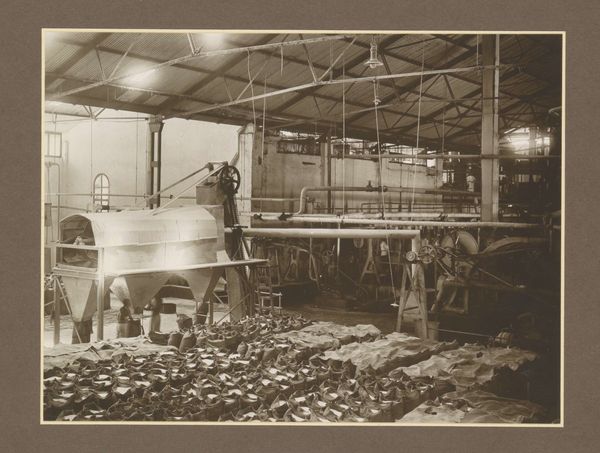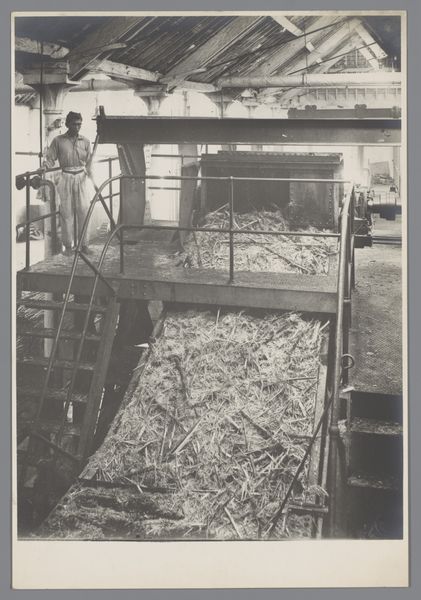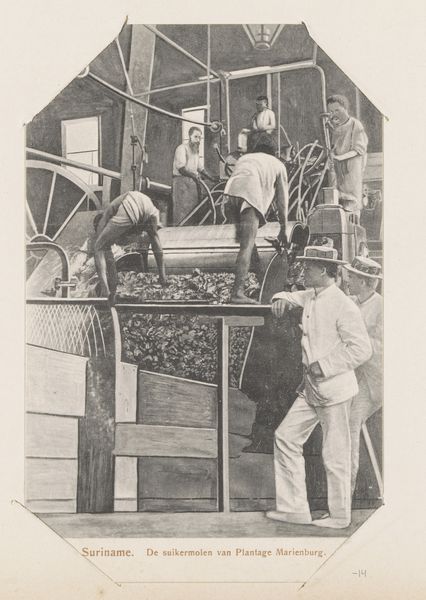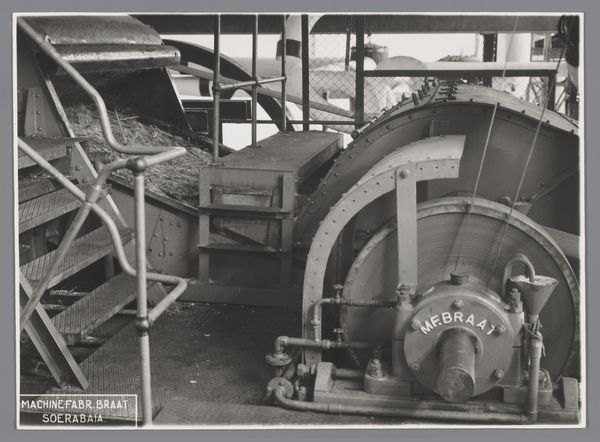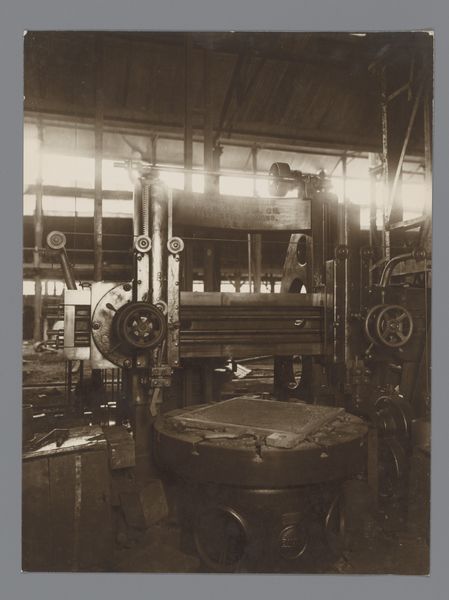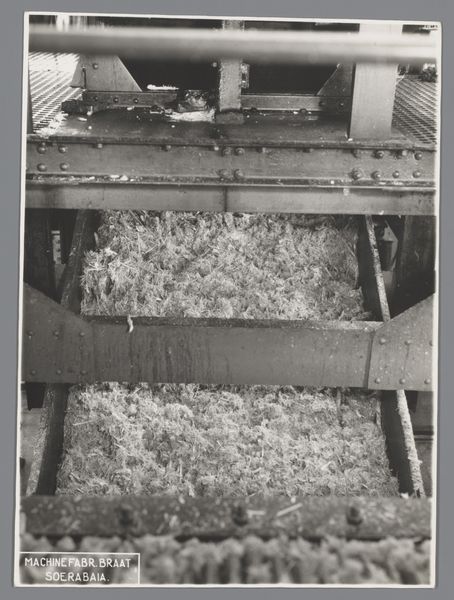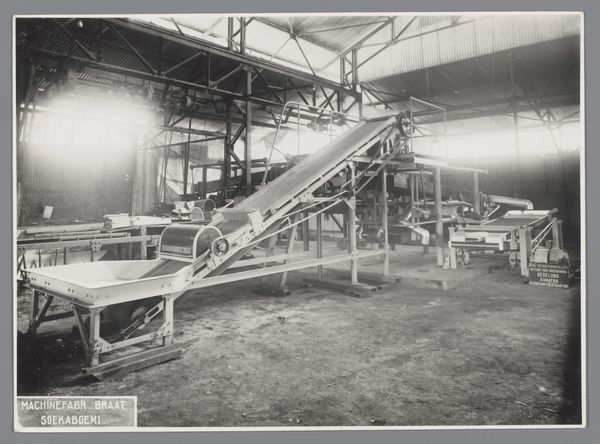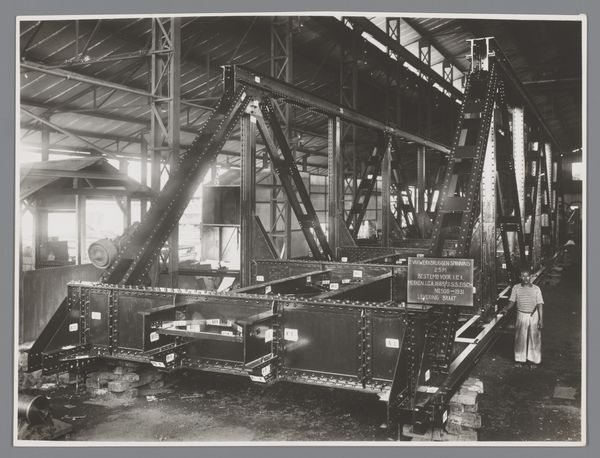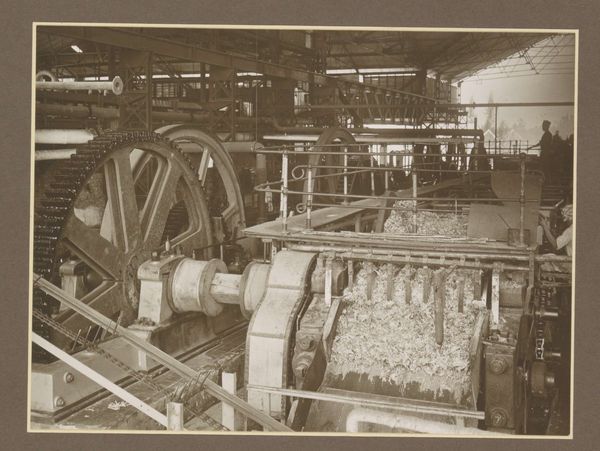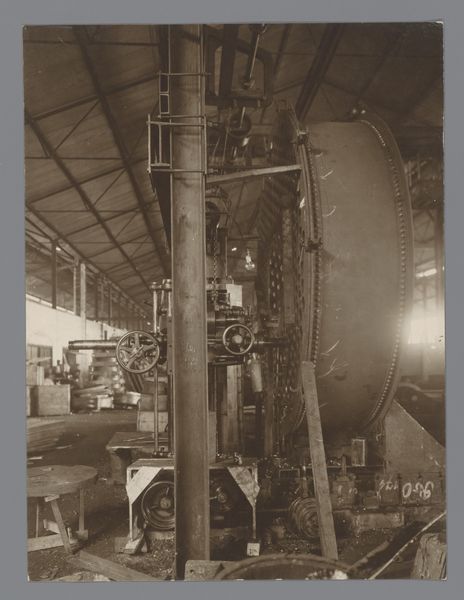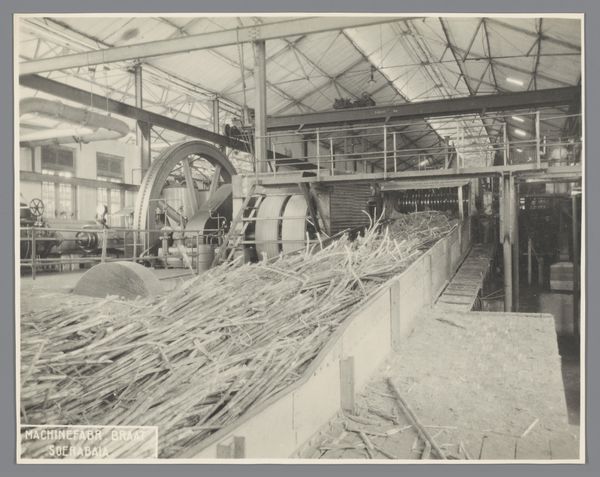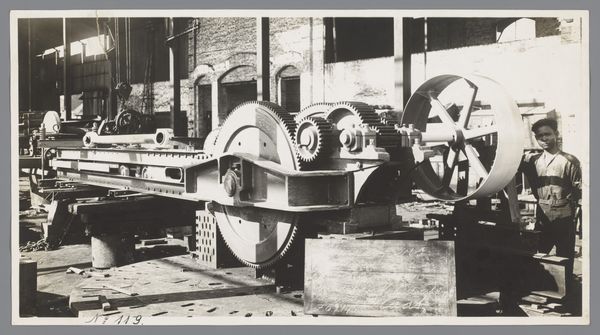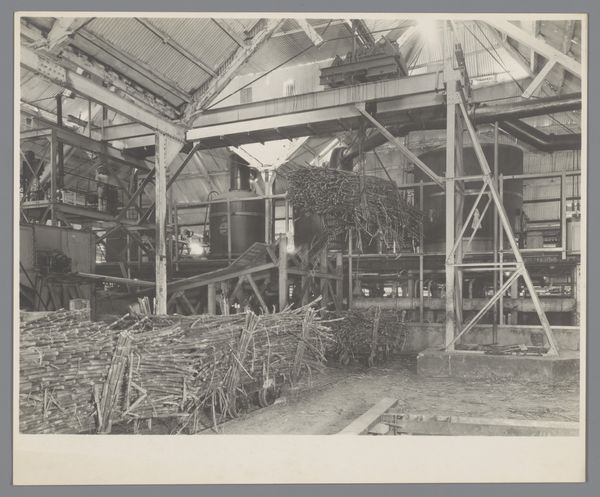
photography
#
sculpture
#
landscape
#
photography
#
realism
Dimensions: height 175 mm, width 126 mm
Copyright: Rijks Museum: Open Domain
Editor: This is "Opvoerband," a photograph taken sometime between 1931 and 1937, currently housed in the Rijksmuseum. It's a black and white image of what seems to be a conveyor belt loaded with leaves. The scene is industrial, yet strangely still. What strikes me is how this inanimate object, the conveyor belt, dominates the frame. How do you interpret this work? Curator: I see this photograph as a powerful commentary on labor, technology, and the landscape. Considering the era, the rise of industrialization in the early 20th century significantly impacted labor practices, and, therefore, class structures. This image isn’t simply a depiction of a conveyor belt; it’s a window into a system that alienates workers from the product of their labor. The "landscape" tag invites us to look past the mechanical elements toward the environment and, perhaps, a larger discussion about land use, power, and extraction of resources. The leaves themselves, carried along by the belt, might be a metaphor for displaced labor. Editor: So, the image critiques the dehumanizing effects of industrialization? Is there an underlying tension between nature and technology in the photograph? Curator: Precisely. The repetitive nature of the conveyor belt, juxtaposed against the organic leaves, speaks to the struggle between human endeavor and natural resources, a dichotomy that continues to shape political conversations today. It raises questions about sustainability, environmental impact, and the ethics of mass production, that is how machines disempower the individual worker, making workers part of a landscape in itself. Where is human agency within such processes? What labor hierarchies are involved in cultivating or harvesting those leaves? What does this seemingly simple image tell us about complex issues in labor, resource allocation and access? Editor: It's interesting how one photo can provoke so many thoughts about society and environment. I see it now as less of a still image and more as a frozen moment in a continuous cycle of production and exploitation. Curator: And by encouraging critical examinations, we gain a better understanding of social dynamics. Every artwork is not just an image but is a powerful dialogue between historical narrative, class, gender, and even cultural differences, reflecting society.
Comments
No comments
Be the first to comment and join the conversation on the ultimate creative platform.
